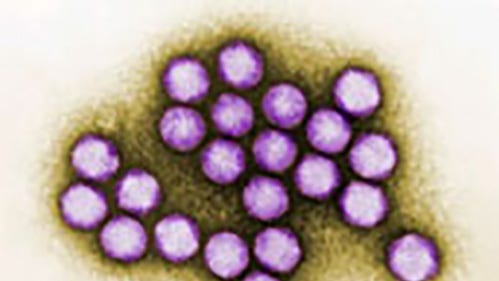Infection
Diarrhea-causing virus spreads in Palm Beach County. A respiratory illness is also rising
As one digestive disease declines in Palm Beach County, another is spiking, sewage testing shows.
Rotavirus, a diarrhea-causing pathogen that mostly infects children, is skyrocketing in north county wastewater as the stomach-flu causing norovirus slowly recedes, the latest data from the Jupiter-area Loxahatchee River District show.
Concentrations of a respiratory contagion, adenovirus, are also on the rise. It’s unclear whether this is translating into outbreaks of severe infections, though.
Rotavirus levels exploded about 15-fold between Oct. 20 and 27, the district reports. The national WastewaterSCAN initiative, led by Stanford University, found about 383 rotavirus fragments per milligram of sewage in tests conducted Oct. 27, up from about 26 one week earlier.
More:What if my at-home COVID tests have expired? Step by step, how to tell if you can use them
Flu, monkeypox on the list of what’s tested in Palm Beach County sewage
The district sends sewage samples to WastewaterSCAN for testing. The national initiative started testing for rotavirus in September. It has worked with the district since 2022 to test wastewater for diseases such as COVID-19, monkeypox and the flu.
Rotavirus’ most common symptoms are severe watery diarrhea, vomiting, fever or abdominal pain, the Center for Disease Control and Prevention says.
“You can get infected with rotavirus if you get rotavirus particles in your mouth,” the CDC says on its website. One way this happens is by putting “your unwashed hands that are contaminated with poop into your mouth.” Eating contaminated food also causes infection.
Getting the rotavirus vaccine provides the best protection against severe infection, the CDC says.
Frank Cerabino:Sorry, Gov. DeSantis, Count me out of your Florida death cult. I got COVID vax again.
Moving on to the breathing virus
Concentrations of the airborne adenovirus group F have doubled from mid-to-late October, Loxahatchee River District sewage data shows.
WastewaterSCAN readings detected about 9,748 adenovirus fragments per milligram Oct. 27, up from about 4,853 on Oct. 16.
The airborne pathogen causes cold-like or flu-like symptoms, such as fever, sore throat, pink eye and pneumonia, the CDC says.
The virus can spread through touch or handshakes, through the air by coughing or sneezing, or contact with stools, the CDC says, such as during diaper changes. Washing hands helps prevent infection.
No antiviral medicine or treatment has been approved for the general public, the CDC says, and the only vaccine for it is approved only for the military. Most infections are mild.
Even as rotavirus and adenovirus spread, they don’t appear to be causing big outbreaks of severe infection.
“We’re not seeing a lot more people presenting with respiratory symptoms” or diarrhea, former Palm Beach County Medical Society president Dr. Larry Bush said. People who get a respiratory infection but test negative for COVID or influenza could have adenovirus, he said, adding that the flu vaccine is not built for adenovirus.
Another stomach bug, norovirus, fell about 38% in October, Loxahatchee River District testing shows.
WastewaterSCAN found about 4,165 viral fragments per milligram Oct. 27, down from about 6,661 on Oct. 2. Like rotavirus, norovirus attacks the digestive system.
It’s the leading cause of vomiting and diarrhea, the CDC says. “You can get norovirus by accidentally getting tiny particles of feces or vomit in your mouth from a person infected with norovirus,” the agency says on its website.
COVID-19 shows no consistent signs of spreading again after plunging from its summer highs.
WastewaterSCAN tests conducted Oct. 27 found 43 coronavirus fragments per milligram, up from about 26 parts per milligram, but about 70% less than August.
Testing that Boston-based Biobot Analytics conducted on Monday found about 188 particles per milliliter, lower than Oct. 23, but higher than Oct. 16.
Chris Persaud is the data reporter for The Palm Beach Post. You can reach him at [email protected]. Help support our journalism. Subscribe today.

